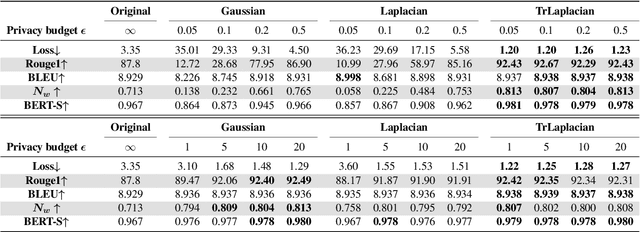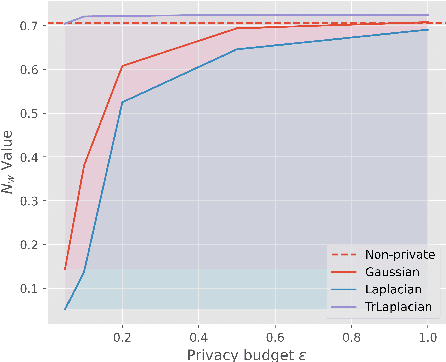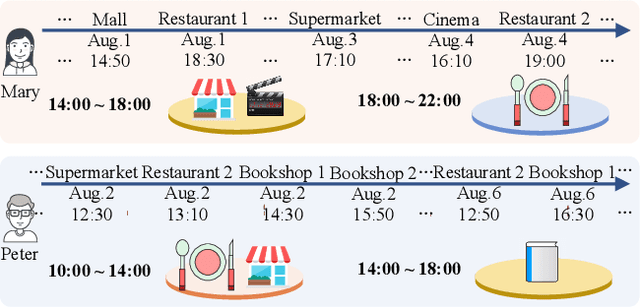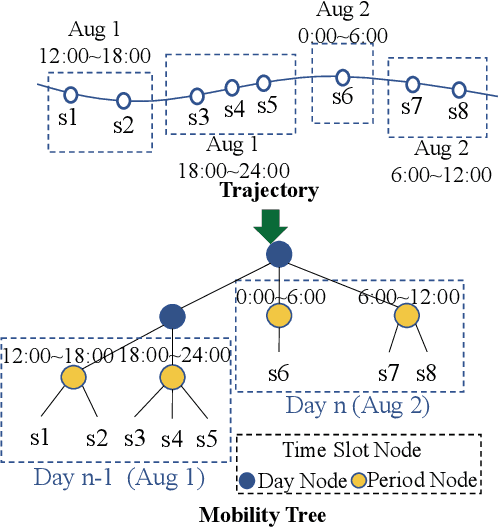Tianhao Huang
C^2 ATTACK: Towards Representation Backdoor on CLIP via Concept Confusion
Mar 12, 2025Abstract:Backdoor attacks pose a significant threat to deep learning models, enabling adversaries to embed hidden triggers that manipulate the behavior of the model during inference. Traditional backdoor attacks typically rely on inserting explicit triggers (e.g., external patches, or perturbations) into input data, but they often struggle to evade existing defense mechanisms. To address this limitation, we investigate backdoor attacks through the lens of the reasoning process in deep learning systems, drawing insights from interpretable AI. We conceptualize backdoor activation as the manipulation of learned concepts within the model's latent representations. Thus, existing attacks can be seen as implicit manipulations of these activated concepts during inference. This raises interesting questions: why not manipulate the concepts explicitly? This idea leads to our novel backdoor attack framework, Concept Confusion Attack (C^2 ATTACK), which leverages internal concepts in the model's reasoning as "triggers" without introducing explicit external modifications. By avoiding the use of real triggers and directly activating or deactivating specific concepts in latent spaces, our approach enhances stealth, making detection by existing defenses significantly harder. Using CLIP as a case study, experimental results demonstrate the effectiveness of C^2 ATTACK, achieving high attack success rates while maintaining robustness against advanced defenses.
Leveraging ASIC AI Chips for Homomorphic Encryption
Jan 13, 2025Abstract:Cloud-based services are making the outsourcing of sensitive client data increasingly common. Although homomorphic encryption (HE) offers strong privacy guarantee, it requires substantially more resources than computing on plaintext, often leading to unacceptably large latencies in getting the results. HE accelerators have emerged to mitigate this latency issue, but with the high cost of ASICs. In this paper we show that HE primitives can be converted to AI operators and accelerated on existing ASIC AI accelerators, like TPUs, which are already widely deployed in the cloud. Adapting such accelerators for HE requires (1) supporting modular multiplication, (2) high-precision arithmetic in software, and (3) efficient mapping on matrix engines. We introduce the CROSS compiler (1) to adopt Barrett reduction to provide modular reduction support using multiplier and adder, (2) Basis Aligned Transformation (BAT) to convert high-precision multiplication as low-precision matrix-vector multiplication, (3) Matrix Aligned Transformation (MAT) to covert vectorized modular operation with reduction into matrix multiplication that can be efficiently processed on 2D spatial matrix engine. Our evaluation of CROSS on a Google TPUv4 demonstrates significant performance improvements, with up to 161x and 5x speedup compared to the previous work on many-core CPUs and V100. The kernel-level codes are open-sourced at https://github.com/google/jaxite.git.
Private Language Models via Truncated Laplacian Mechanism
Oct 10, 2024



Abstract:Deep learning models for NLP tasks are prone to variants of privacy attacks. To prevent privacy leakage, researchers have investigated word-level perturbations, relying on the formal guarantees of differential privacy (DP) in the embedding space. However, many existing approaches either achieve unsatisfactory performance in the high privacy regime when using the Laplacian or Gaussian mechanism, or resort to weaker relaxations of DP that are inferior to the canonical DP in terms of privacy strength. This raises the question of whether a new method for private word embedding can be designed to overcome these limitations. In this paper, we propose a novel private embedding method called the high dimensional truncated Laplacian mechanism. Specifically, we introduce a non-trivial extension of the truncated Laplacian mechanism, which was previously only investigated in one-dimensional space cases. Theoretically, we show that our method has a lower variance compared to the previous private word embedding methods. To further validate its effectiveness, we conduct comprehensive experiments on private embedding and downstream tasks using three datasets. Remarkably, even in the high privacy regime, our approach only incurs a slight decrease in utility compared to the non-private scenario.
Faithful Interpretation for Graph Neural Networks
Oct 09, 2024Abstract:Currently, attention mechanisms have garnered increasing attention in Graph Neural Networks (GNNs), such as Graph Attention Networks (GATs) and Graph Transformers (GTs). It is not only due to the commendable boost in performance they offer but also its capacity to provide a more lucid rationale for model behaviors, which are often viewed as inscrutable. However, Attention-based GNNs have demonstrated instability in interpretability when subjected to various sources of perturbations during both training and testing phases, including factors like additional edges or nodes. In this paper, we propose a solution to this problem by introducing a novel notion called Faithful Graph Attention-based Interpretation (FGAI). In particular, FGAI has four crucial properties regarding stability and sensitivity to interpretation and final output distribution. Built upon this notion, we propose an efficient methodology for obtaining FGAI, which can be viewed as an ad hoc modification to the canonical Attention-based GNNs. To validate our proposed solution, we introduce two novel metrics tailored for graph interpretation assessment. Experimental results demonstrate that FGAI exhibits superior stability and preserves the interpretability of attention under various forms of perturbations and randomness, which makes FGAI a more faithful and reliable explanation tool.
Semi-supervised Concept Bottleneck Models
Jun 27, 2024Abstract:Concept Bottleneck Models (CBMs) have garnered increasing attention due to their ability to provide concept-based explanations for black-box deep learning models while achieving high final prediction accuracy using human-like concepts. However, the training of current CBMs heavily relies on the accuracy and richness of annotated concepts in the dataset. These concept labels are typically provided by experts, which can be costly and require significant resources and effort. Additionally, concept saliency maps frequently misalign with input saliency maps, causing concept predictions to correspond to irrelevant input features - an issue related to annotation alignment. To address these limitations, we propose a new framework called SSCBM (Semi-supervised Concept Bottleneck Model). Our SSCBM is suitable for practical situations where annotated data is scarce. By leveraging joint training on both labeled and unlabeled data and aligning the unlabeled data at the concept level, we effectively solve these issues. We proposed a strategy to generate pseudo labels and an alignment loss. Experiments demonstrate that our SSCBM is both effective and efficient. With only 20% labeled data, we achieved 93.19% (96.39% in a fully supervised setting) concept accuracy and 75.51% (79.82% in a fully supervised setting) prediction accuracy.
PROMPT-SAW: Leveraging Relation-Aware Graphs for Textual Prompt Compression
Mar 30, 2024Abstract:Large language models (LLMs) have shown exceptional abilities for multiple different natural language processing tasks. While prompting is a crucial tool for LLM inference, we observe that there is a significant cost associated with exceedingly lengthy prompts. Existing attempts to compress lengthy prompts lead to sub-standard results in terms of readability and interpretability of the compressed prompt, with a detrimental impact on prompt utility. To address this, we propose PROMPT-SAW: Prompt compresSion via Relation AWare graphs, an effective strategy for prompt compression over task-agnostic and task-aware prompts. PROMPT-SAW uses the prompt's textual information to build a graph, later extracts key information elements in the graph to come up with the compressed prompt. We also propose GSM8K-AUG, i.e., an extended version of the existing GSM8k benchmark for task-agnostic prompts in order to provide a comprehensive evaluation platform. Experimental evaluation using benchmark datasets shows that prompts compressed by PROMPT-SAW are not only better in terms of readability, but they also outperform the best-performing baseline models by up to 14.3 and 13.7 respectively for task-aware and task-agnostic settings while compressing the original prompt text by 33.0 and 56.7.
Learning Time Slot Preferences via Mobility Tree for Next POI Recommendation
Mar 17, 2024



Abstract:Next Point-of-Interests (POIs) recommendation task aims to provide a dynamic ranking of POIs based on users' current check-in trajectories. The recommendation performance of this task is contingent upon a comprehensive understanding of users' personalized behavioral patterns through Location-based Social Networks (LBSNs) data. While prior studies have adeptly captured sequential patterns and transitional relationships within users' check-in trajectories, a noticeable gap persists in devising a mechanism for discerning specialized behavioral patterns during distinct time slots, such as noon, afternoon, or evening. In this paper, we introduce an innovative data structure termed the ``Mobility Tree'', tailored for hierarchically describing users' check-in records. The Mobility Tree encompasses multi-granularity time slot nodes to learn user preferences across varying temporal periods. Meanwhile, we propose the Mobility Tree Network (MTNet), a multitask framework for personalized preference learning based on Mobility Trees. We develop a four-step node interaction operation to propagate feature information from the leaf nodes to the root node. Additionally, we adopt a multitask training strategy to push the model towards learning a robust representation. The comprehensive experimental results demonstrate the superiority of MTNet over ten state-of-the-art next POI recommendation models across three real-world LBSN datasets, substantiating the efficacy of time slot preference learning facilitated by Mobility Tree.
 Add to Chrome
Add to Chrome Add to Firefox
Add to Firefox Add to Edge
Add to Edge